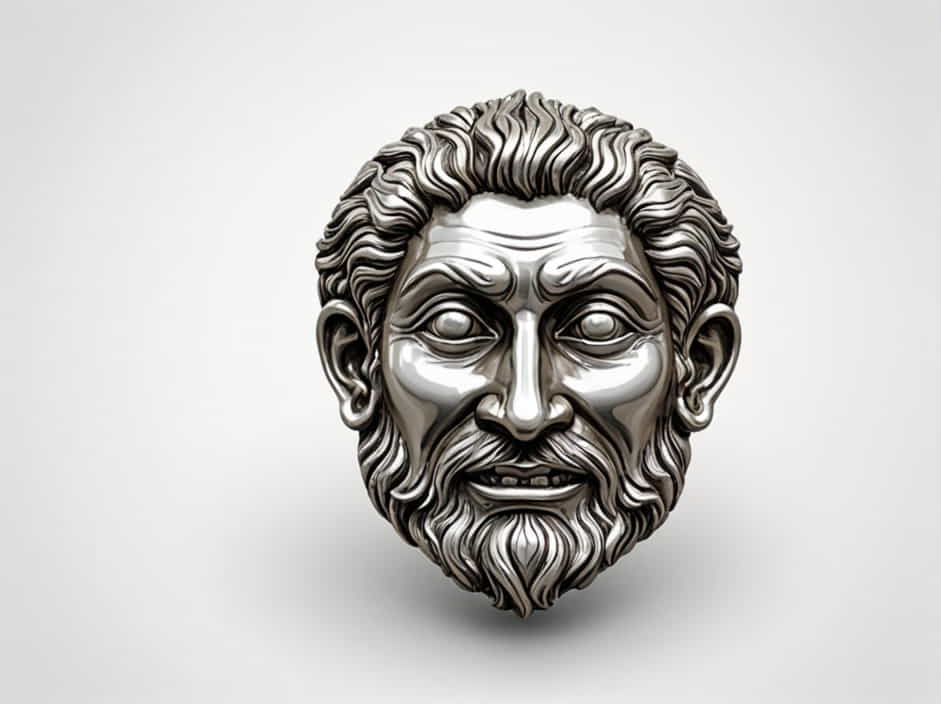Throughout history, amulets and talismans have been used for protection, good fortune, and spiritual purposes. Among the most intriguing artifacts from ancient Rome is the silver amulet featuring a grotesque face. These unusual objects, often crafted with exaggerated facial expressions, carried deep symbolic meaning and were believed to ward off evil.
But what was the true purpose of these amulets? Why did the Romans create them? This topic explores the history, cultural significance, and artistic details of Roman silver amulets with grotesque faces.
What Is a Roman Silver Amulet?
Definition and Purpose
A Roman silver amulet is a small metal charm made of precious silver, worn as a pendant or carried as a protective object. These amulets were believed to:
- Ward off evil spirits and curses
- Bring good luck and protection
- Show social or religious status
The Grotesque Face: Symbolism and Meaning
The grotesque face featured on these amulets is not merely decorative. These exaggerated facial features—often twisted, angry, or laughing—were designed to:
- Scare away malevolent forces (a practice known as apotropaic magic)
- Represent divine or mythical beings with protective powers
- Symbolize satire or comedy, reflecting Roman artistic traditions
The Role of Amulets in Roman Society
Who Used These Amulets?
These silver amulets were commonly worn by:
- Soldiers – for protection in battle
- Children – to safeguard against illness and bad luck
- Travelers and merchants – to ensure safe journeys
- Religious figures – as symbols of faith or devotion
How Were Amulets Made?
Craftsmen in ancient Rome used techniques like casting, engraving, and repoussé (hammered relief work) to create these intricate pieces. The grotesque faces were often:
- Highly detailed, with deep-set eyes and exaggerated mouths
- Decorated with mythological elements, such as horns, wings, or animal motifs
- Made with inscriptions or magical symbols, enhancing their power
The Grotesque Face in Roman Art and Culture
Influence of Mythology
The grotesque face amulets were inspired by Roman and Greek mythology, particularly:
- Gorgons (like Medusa) – creatures with terrifying faces that turned enemies to stone
- Theatre masks – exaggerated expressions used in Roman comedy and satire
- Demon-like figures – representing chaos, disorder, or protection against evil
Similar Artifacts in Roman Religion
Romans believed in many supernatural beings and deities associated with protection, such as:
- Fascinus – the god of protection, often depicted in amulets
- Larvae and Lemures – restless spirits that haunted the living
- Genius Loci – guardian spirits of places and homes
The grotesque face, in this context, acted as a spiritual shield, much like the Gorgon heads seen in Roman mosaics and sculptures.
Where Were These Amulets Found?
Archaeological Discoveries
Roman silver amulets with grotesque faces have been unearthed in:
- Military camps – suggesting their use by soldiers for protection
- Grave sites – possibly buried with individuals to guard them in the afterlife
- Homes and temples – indicating their role in household rituals and religious practices
Variations Across the Roman Empire
These amulets were found in different regions of the Roman Empire, including:
- Italy – the heart of Roman culture and craftsmanship
- Britannia (Britain) – where Roman soldiers carried protective charms
- Gaul (France) and Germania – showing how Roman traditions blended with local beliefs
- Egypt and the Middle East – where Greco-Roman and Eastern mystical influences merged
The Legacy of Roman Amulets
Connection to Medieval and Modern Superstitions
Even after the fall of the Roman Empire, similar protective symbols continued to appear in:
- Medieval Christian relics, featuring saints and grotesque figures
- Gargoyles on cathedrals, serving as spiritual protectors
- Modern lucky charms and jewelry, inspired by ancient talismans
Collectors and Museums
Today, Roman silver amulets with grotesque faces are highly valued by:
- Historians, for their insight into Roman magical practices
- Archaeologists, as evidence of ancient superstitions
- Collectors, who seek rare and authentic pieces
- Museums, where they are displayed as examples of Roman artistry and beliefs
The Roman silver amulet of a grotesque face is more than just an artifact; it is a window into the mystical and artistic world of ancient Rome. These amulets were designed to protect, symbolize, and reflect Roman culture, blending superstition, religion, and fine craftsmanship.
Even today, their striking imagery and powerful symbolism continue to captivate historians, collectors, and anyone fascinated by the mysteries of the past.
